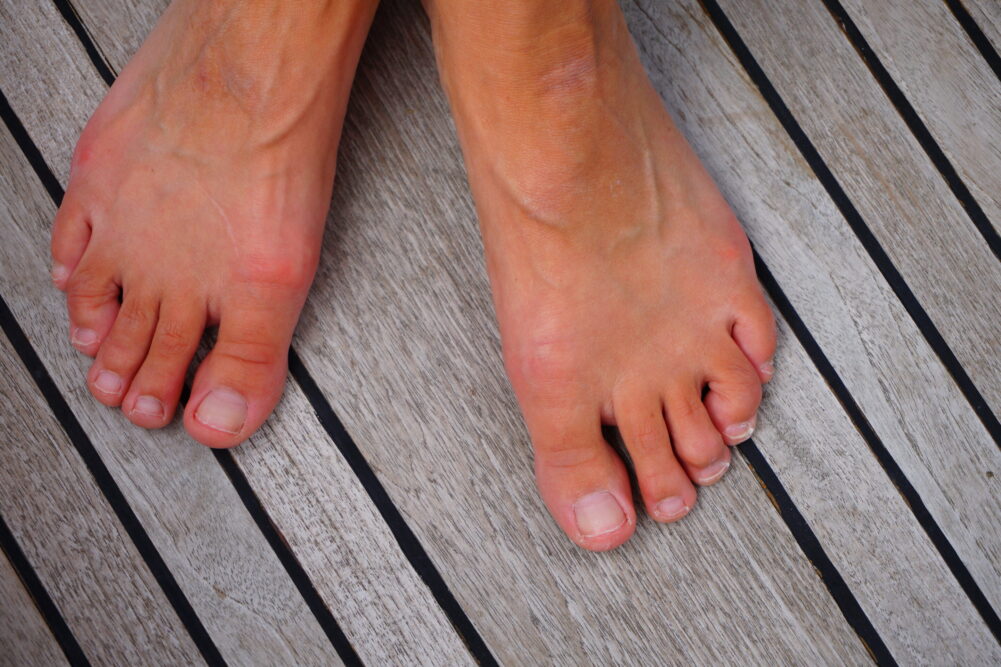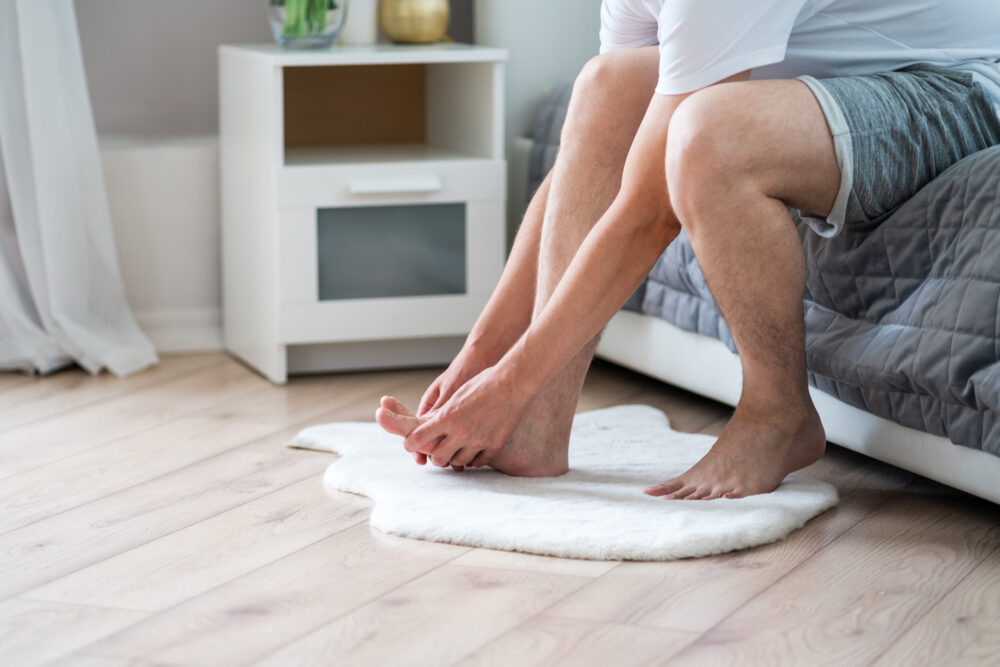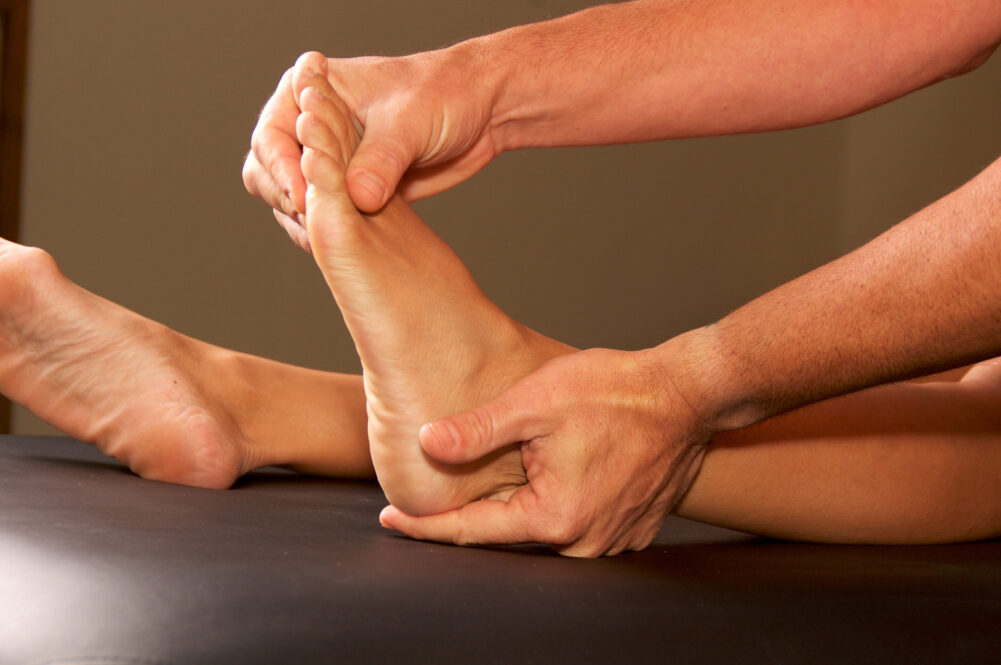Hammertoes
Curved toes can be painful, disruptive, and stop you from living your life fully. The deformity called hammertoes can lead to ongoing problems with mobility, but luckily, there are treatment options available.
At Waco Foot & Ankle, our award-winning team of podiatrists is here to help you overcome this condition with the personalized care you deserve.
What are Hammertoes?
A hammertoe is a contracture (bending) deformity in the middle joint of the second, third, or fourth toe. The toe remains “stuck” in a bent position at rest, and cannot be straightened using only the toe muscles. This abnormal bending can put pressure on the toe when wearing shoes, which can lead to problems.
Hammertoes often start mild, but they tend to get worse over time. Severe hammertoes can go on to impact your comfort walking and even the types of shoes you can wear.
Early intervention is best as mild hammertoes can often be managed and even corrected with non-surgical options. However, if you have been waiting a while to get treatment, we can still help you treat your severe hammertoes with the right procedures.
What Causes a Hammertoe?
The most common cause of hammertoe is a muscle/tendon imbalance. This imbalance, which leads to a bending of the toe, results from mechanical (structural) or neurological changes in the foot that occur over time in some people.
Another cause of hammertoes is wearing poor-fitting shoes. High heels are common culprits along with shoes that have a tight fit and narrow toe box. Even just wearing shoes that are the wrong size can lead to hammertoes as your feet cannot lay flat inside of them.
You should only wear shoes that offer a lot of support and give your toes plenty of room to bend as you walk.
Other causes for hammertoes include being caused by some type of trauma. A serious toe jam or break could cause the toe to get “stuck” in a bent position. Also, some people just inherit their hammertoes from their family line.
Symptoms of Hammertoes
Common symptoms of hammertoes include:
- An abnormally bent toe that curls inward at the middle joint, taking on a hammer appearance.
- Pain or discomfort with movement, especially trying to bend or flex the toes.
- Corns or calluses (a buildup of thickened skin) on the affected toes that rub against your shoes. Corns are caused by constant friction against the shoe and may be soft or hard, depending on their location.
- Inflammation, redness, or a burning sensation.
- In more severe cases of hammertoe, open sores may form.
How to Diagnose Hammertoes
Although hammertoes are readily apparent from a visual inspection, the doctors will obtain a thorough history of your symptoms and examine your foot before making an official diagnosis. One of our doctors will meet with you and perform a foot assessment. We diagnose hammertoes through a brief physical exam.
In addition, the foot and ankle surgeon may take X-rays to determine the degree of the deformities and assess any changes that may have occurred. Once we have determined that the hammertoe is present, we can begin to address underlying causes and explore potential solutions.
Hammertoes are progressive, which means they do not go away by themselves and usually they will get worse over time. However, not all cases are alike—some hammertoes progress more rapidly than others.
Non-Surgical Treatment Options
Luckily, many causes of hammertoes are treatable without surgery. Some options include:
- Custom orthotics (shoe inserts) that support greater alignment.
- Physical therapy to realign your toe joints.
- Padding for corns and calluses so they can heal.
- Switching to more comfortable shoes that support your foot’s natural structure. Avoid shoes with pointed toes, shoes that are too short, or shoes with high heels, all of which can force your toe against the front of the shoe. Instead, choose comfortable shoes with deep, roomy toe boxes and heels no higher than two inches.
- Corticosteroid injections to reduce pain and inflammation.
- Non-steroidal anti-inflammatory medication (NSAIDs) to manage pain and reduce swelling.
- Splitting or strapping to realign the affected toes
We always suggest meeting with our foot surgeons first before taking over-the-counter treatments. Some shoe inserts and corn pads can actually worsen your hammertoes if they are not the right type.
A consultation with our podiatrists is the best way to figure out what treatment options could be the most beneficial for you.
Surgical Treatment
In severe cases, a surgeon may suggest correcting your hammertoes through surgery. A hammertoe that has become too rigid and causes a lot of pain may need surgical intervention to heal properly.
At our podiatry center, we will consider the severity of your deformity and the potential benefits of a surgical approach to treatment. We will also explore techniques and procedures together, so you can decide which option is right for you.
The most common hammertoe surgery procedure involves cutting the joint at both ends and using a pin or K-wire to realign the bone. The pin or wire can be removed after the toe heals, or you can opt for a permanent screw or small rod that eliminates the need for a follow-up procedure.
Contact Us for Help with Hammertoes
At Waco Foot & Ankle, we are here to help you cure your hammertoe deformity. Our doors are always open to support you, whether your symptoms have just begun or have become more severe recently.
Please contact us at (254) 776-6995 or request an appointment online to meet with one of our podiatrists in Woodway, TX.



